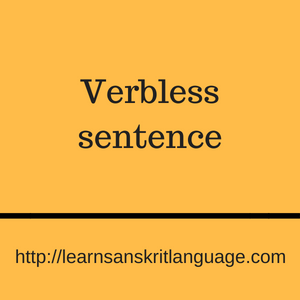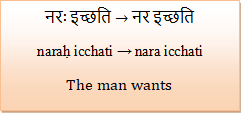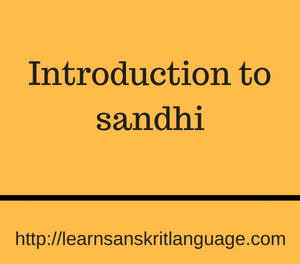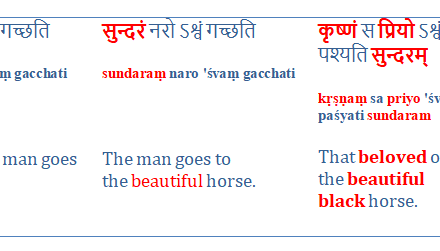Another feature of Sanskrit language is that it even allows us to form a verbless sentence. But what is a verbless sentence?
From these above examples, you must have got an idea of what is a verbless sentence. Basically, it is a sentence where a noun is directed towards another noun. there is no role of verbs in such sentences.
However, in some sentences, a verb that denotes ‘existence’ is sometimes optionally added
Visarg sandhi
Visarg sandhi, a part of Sanskrit sandhi system, comes with a complex set of rules which may be little hard for the beginners to grasp. But with some common logic, the rules can be arguably easy to understand and can be easily applied too.
However, there are two important rules of sandhi that needs to be understood before we go any further.
- The visarga cannot be placed between two voiced sounds.
- The visarga matches the consonant that follows the visarga as much as possible.
Loss of -h
In front of any vowel except ‘a’, ‘h’ is dropped.
The small puff of air behind narah is a weak sound, which can be dropped. Note that the above word, “ichhati” starts with a vowel, this is a rare circumstance.
Change to ‘o’
This is a very odd rule of sandhi. In front of voiced consonants, the sound ah becomes o. the rule is such that because of the presence of the “a” sound in the word. It reacts with consonants and changes it to “o” sound.
Here are some of the examples,
You can see the new Devanagari word”ऽ“ which means ‘avagraha’ or separator. It indicates loss of a sound due to sandhi.
Change to s-sound
Now we come to unvoiced consonants. How does a sandhi react in front of unvoiced consonants? The answer is simple. It will blend itself with the closest hissing sound. Let’s take a look at the example.









